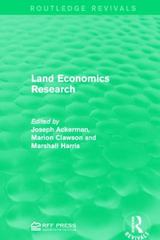Economics questions 
25. If the exchange rate is 175 yen = $1, what is the cost of a bottle of rice wine that costs 5250 yen? A. 28 B. 30 C. 32 D. 34 26. Exchange rates are 0.98 U.S. dollars per Canadian dollar, 150 yen per Canadian dollar, 0.8 euro per Canadian dollar, and 20 pesos per Canadian dollar. A bottle of beer in New York costs 6 U.S. dollars, 1200 yen in Tokyo, 7 euros in Munich, and 100 pesos in Cancun. Which of the following indicates the most expensive beer? A. Cancun B. New York C. Tokyo D. Munich 27. Suppose that in 1999 you could purchase about 400 Greek drachmas (the former Greek currency, replaced by the euro in 2002) for a dollar. In 2000, you could purchase about 350 drachmas for a dollar. Which of the following best explain the changes that could have taken place between 1999 and 2000? A. The dollar appreciated, increasing the trade balance. B. The dollar depreciated, decreasing the trade balance. C. The dollar appreciated, decreasing the trade balance. D. The dollar depreciated, increasing the trade balance. 28. Suppose that a kilogram can of coffee costs about $6 in Canada. Suppose the exchange rate is 0.7 euro per dollar and that a kilogram can of coffee in Belgium costs about 2.1 euros. What is the real exchange rate? A. 2.45 cans of Belgian coffee per can of Canadian coffee B. 2 cans of Belgian coffee per can of Canadian coffee C. 3/4 cans of Belgian coffee per can of Canadian coffee D. 3/5 cans of Belgian coffee per can of Canadian coffee 29. Which of the following would a depreciation of the Canadian real exchange rate induce Canadian consumers to buy? A. fewer domestic goods and foreign goods B. more domestic goods, but fewer foreign goods C. fewer domestic goods, but more foreign goods D. more domestic goods and foreign goods 30. Which of the following does the open-economy macroeconomic model take as given? A. GDP, but not the price level B. the price level, but not GDP C. both the price level and GDP D. the exchange rate 31. In the open-economy macroeconomic model, how can the market for loanable funds identity be written? CA. S = I B. S = NCO C. S = I + NCO D. S + I = NCO 32. What does a higher real interest rate lower the quantity of? A. national saving B. net capital outflow C. loanable funds demanded D. loanable funds supplied 33. Which of the following could be prompted by an interest rate that is temporarily higher in Canada than in the rest of the world? A. A Swiss bank purchases a Canadian bond instead of the German bond it had considered purchasing. B. Canadian firms decide, since interest rates are higher, to do more investment spending. C. Brad, a Canadian resident, decides to put less money in his savings account than he had planned to. D. Canadian net capital outflow increases







